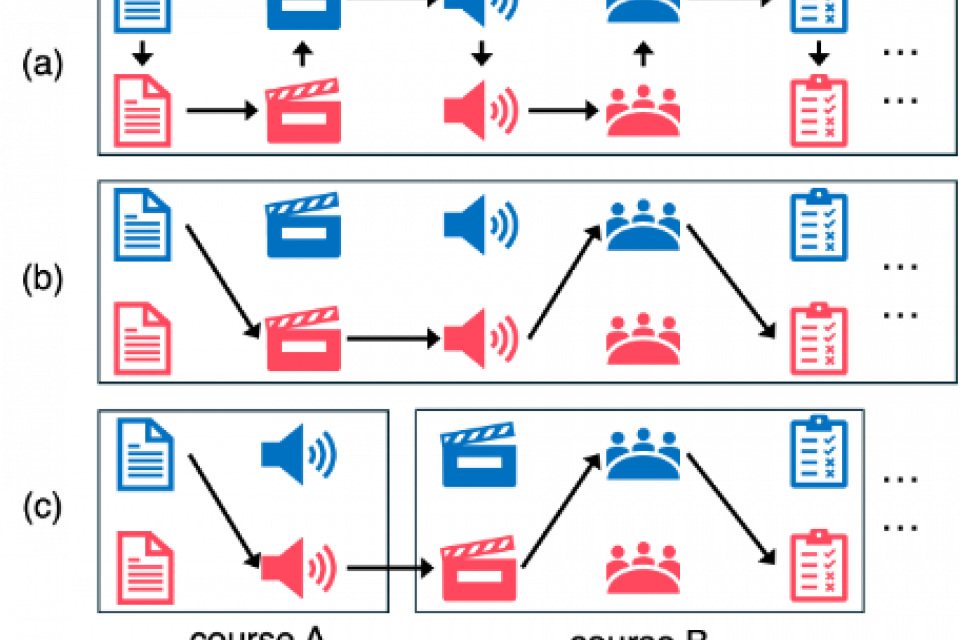Datasets
Standard Dataset
Data: Optimizing Personalized Learning in Online Education through Integrated Cross-Course Learning Path Planning
- Citation Author(s):
- Submitted by:
- Yong-Wei Zhang
- Last updated:
- Tue, 07/09/2024 - 05:31
- DOI:
- 10.21227/m8n4-jy03
- License:
 282 Views
282 Views- Categories:
- Keywords:
Abstract
This study investigates the optimization of cross-course learning paths in e-learning environments, addressing the challenge of navigating vast educational resources and aligning them with diverse learner needs. We propose a novel cross-course learning path planning model that integrates resources from multiple courses to tailor educational experiences to individual learner profiles. The model employs a modified affinity function, the item response theory (IRT), and a knowledge graph to effectively match learners' abilities with material difficulties and prerequisites. We introduce an innovative variable-length continuous representation (VLCR) to ensure the uniqueness of learning paths, combined with a differential evolution algorithm to optimize the multi-attribute matching (MAM) model, enhancing the personalization of the learning experience. Our numerical experiments confirm the model's efficacy in reducing educational mismatches and improving learning outcomes. This research contributes a significant framework for developing adaptive e-learning systems that cater to the evolving demands of learners in digital education platforms.
The dataset includes data on seven types of learner attributes, named from LearnerA.mat to LearnerG.mat. Each learner dataset contains two variables: L and LP. L is a 10x16 matrix that stores learner attributes, where each row represents a learner. The first column indicates the learner's ability level, the second column indicates the expected learning time, columns 3 to 6 represent normalized learning styles, and columns 7 to 16 represent learning objectives. LP is a structure that stores statistical information about this matrix.
The dataset also includes data on seven types of learning resource attributes, named DatasetA.mat, DatasetB.mat, DatasetC.mat, DatasetAB.mat, DatasetAC.mat, DatasetBC.mat, and DatasetABC.mat. Each resource dataset contains two variables: M and MP. M is a matrix that stores the attributes of learning materials, where each row represents a material. The first column indicates the material's difficulty level, the second column represents the learning time required for the material, columns 3 to 6 describe the type of material, columns 7 to 16 cover the knowledge points addressed by the material, and columns 17 to 26 list the prerequisite knowledge points required for the material. MP is a structure that stores statistical information about this matrix.
The dataset encompasses results from learning path planning involving seven types of learners across seven datasets, totaling 49 datasets, named in the format PathCost4_LSHADE_cnEpSin_D_X_L_Y.mat. Here, X represents the type of learning resource dataset (A, B, C, AB, AC, BC, ABC) and Y represents the type of learner (A to G). Each data file contains three variables: Gbest, Gtime, and S. Gbest is a 30x10 matrix, where each column stores the best cost function obtained from 30 runs of path planning for a learner on the corresponding dataset. Gtime is a 30x10 matrix, where each column stores the time spent on each run for a learner on the corresponding dataset. S is a 30x10 cell array storing the status information from each run.
Finally, the dataset includes a compilation of the best cost functions for all runs for all learners across all learning material datasets, named learnerBest.mat. The file contains a variable, learnerBest, which is a 7x7x10x30 four-dimensional array. The first dimension represents the type of learner, the second dimension represents the type of learning material, the third dimension represents the learner index, and the fourth dimension represents the run index.






